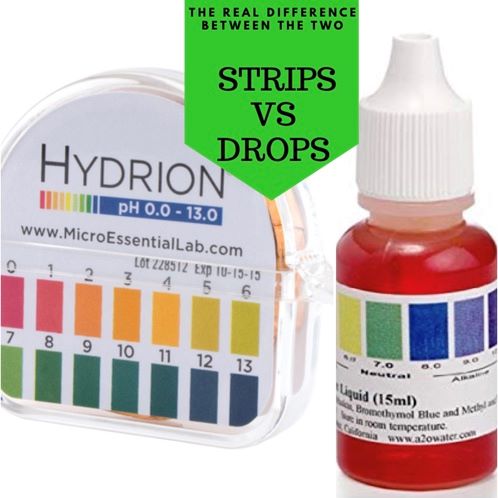
Most commonly people are concerned about the level of pH there water is and rightfully so. Since the growth and popularity of alkaline water the promotion has been higher is best but this is not always the case. Because of marketing sometimes the consumer only gets half the story. While they both measure the pH of in a solution of water they both tell a different side of the story.
What’s pH?
The term pH is called potential hydrogen and it determines how acidic or basic the solution of water is. A pH scale uses a logarithmic system and ranges from 1 – 14 with the lowest number representing the more acidic a solution and the highest number 14 being the more alkaline. A pH of 1 – 6.9 is acidic, and basic is a pH of 7.1 – 14 with pH 7 being neutral. The logarithmic system multiplies by 10 between sequential pH numbers increasing a pH of 8 to a pH of 9 making the solution of water (100 times) more alkaline than the last number. That’s a huge difference when our blood ranges between a pH of 7.35 to 7.45 and any changes under or below those numbers can put the body into shock. For instance to low causes acidosis which can be caused due to the failure of the lungs and kidneys ability to regulate the body’s pH. And too high can cause a condition called alkalosis that is caused by the low amount of carbon dioxide in the blood or too much sodium bicarbonate in the blood.
Buffering / Alkalinity / pH strips
The purpose of alkaline water is to help keep the body pH balance. This is decided by how buffered or unbuffered the solution of water is. Buffered means the number of minerals present in the water. How buffered the water is, means how well it can resist the changes in pH. The human body runs on a series of buffering systems to regulate the balance of pH. Those systems establish the regulations of acid vs alkalinity within the body. Alkalinity is determined in the concentration of minerals found in a solution (bicarbonates, carbonates, and hydroxides) with the ability to buffer acidic conditions. This is why nutrients and minerals are so important because it keeps the buffering systems from pulling minerals deposited in the bones. The measure of alkalinity is determined by pH strips. These indicator strips reveal the buffering ability of the solution in regards to the minerals found in the water.
Chemical Reaction / pH drops
The pH drops, on the other hand, tells the story of hydrogen ions and how they are present in a solution. This is where the story really gets complicated. Hydrogen ions represent how acidic a solution is and the more free hydrogen ions the more acidic the solution of water. This is calculated by the molar concentration and measures the amount of solute (minerals) or chemical species in a volume of water. The molar concentration is a determining factor for both tests. The strips check the amount of solute in water and identify its ability to resists changes in the pH of the body. The pH drops are shaped by the chemical reaction taking place in the solution and through a chemical exchange is how to raise the pH level of the water.
The alkalinity represents the mineral content of the water and its ability to buffer acidic changes of the body and the pH (potential hydrogen) is the chemical reaction that takes place within the water solution to decide how acidic it is by the number of drops it takes to raise the pH level to the desired color of the indicator. Having a high pH number means nothing without the minerals to go with it. It is the same as eating food with no nutritional value. Empty calories serve no purpose for the human body. The objective is to replace whats lost and prevent our body from depleting the reserves.
Family Springs Natural Artesian Alkaline Water provides the choice of natural minerals your body deserves with a pH of 7.8 that comes just the way Mother Nature intended
- November 6, 2020
- Water

